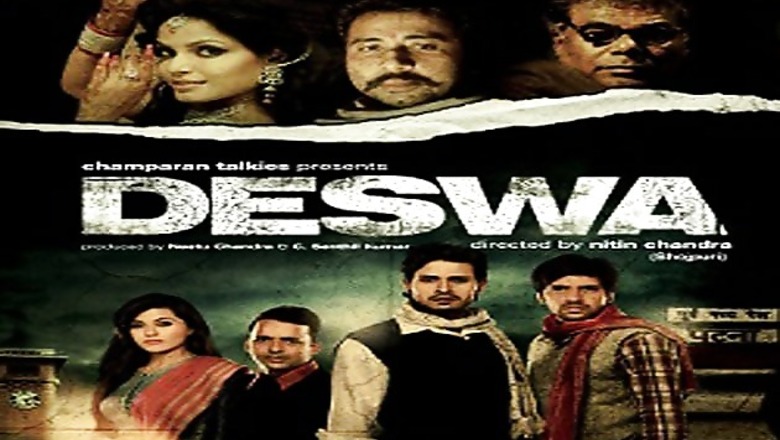
views
Can you imagine a Bhojpuri film engrossing and entertaining audiences at an international film fest? Debutant Nitin Chandra's "Deswa" has done just that, giving the Bhojpuri film industry, reeling under distasteful content and lack of creativity, a much-needed facelift on the global platform.
Screened at the recently concluded International Film Festival of South Asia in Toronto, "the topical film with a strong message on the youth and the opportunities in Bihar" bowled over Indians residing in Toronto.
Rohit Ranjan, an NRI from Ranchi, went to see the film with his friends and family and enjoyed the "very strong, free flowing and well-made movie that doesn't drag even once".
Asked about the experience of watching a movie in his own dialect in a foreign land, Rohit said: "Got the goose bumps."
"Watching a Bhojpuri movie in a theatre in foreign land was an incredible experience. It was even better to catch up with a lot of people after the movie and listen to them speaking in chaste Bhojpuri," he added.
With 75 percent occupancy in the theatre, most of the people were from Bihar or eastern Uttar Pradesh, but not necessarily Bhojpuri speaking.
"I did notice two to three small groups inside the theatre that were non-Hindi speaking," said Rohit.
The Bihar and Jharkhand Association of Canada organised the screening and "Deswa" was like a breath of fresh air.
Chandra was "overwhelmed" at the postiive response his directorial debut received.
"People were warm and most importantly, they know good cinema and appreciate it. As a filmmaker, what else do I want? Toronto is a world city and getting rave reviews from the audience here really made me proud, I want to come again and again here," he told IANS in an e-mail interview.
The Bhojpuri film industry came into existence in the early 1960s after India's first president, Rajendra Prasad, asked Bollywood actor Nazir Hussain why no films were being made in the language.
He mulled over it and the result was "Ganga Maiya Tohe Piyari Chadhaibo" that hit the cinemas in 1963 and created history by becoming a blockbuster. Directed by Kundan Kumar and produced by Bishwanath Prasad Shahabadi, it starred Nazir, Kumkum and Ashim Kumar and paved way for many notable films like "Laagi Nahi Chhute Ram", "Bidesiya" and all time favourite "Nadiya Ke Paar".
But from the 1990s onwards, the quality of Bhojupuri cinema went downhill and a filmdom that once entertained family audiences started catering to the front benchers by focusing on titilation and wishy-washy content.
"I totally agree with Bhojpuri cinema being B and C grade, and I don't mind saying that," Chandra said.
In a bid to resurrect the lost glory of Bhojpuri films, Chandra decided to make "Deswa", a far cry from the current lot of distasteful Bhojpuri cinema.
"Bhojpuri is my mother tongue, it's my identity, it's what I am or would be," he said.
"If my mother is not physically fit and if she can't walk, talk and her clothes are also torn, what do I do? I will think about her and do the maximum I can (to help her out). That is what I am doing with small little thing like 'Deswa'," he added.
His endeavour has yielded desired results with the film being screened and lauded at International Film Festival of India (IFFI), South Asian Film Festival of India, Montage Film Festival, Habitat World Film Festival and International Film Festival of Fiji.
At most of the fests, "responses have been really great," said Chandra, adding: "People are shocked and in awe too because they never expected anything like this in a Bhojpuri film."
If made well, the Bhojpuri films can have takers in far off places like "Fiji, Surinam, Mauritius, Trinadad and more," said the director who made documentaries before plunging into feature film making.



















Comments
0 comment